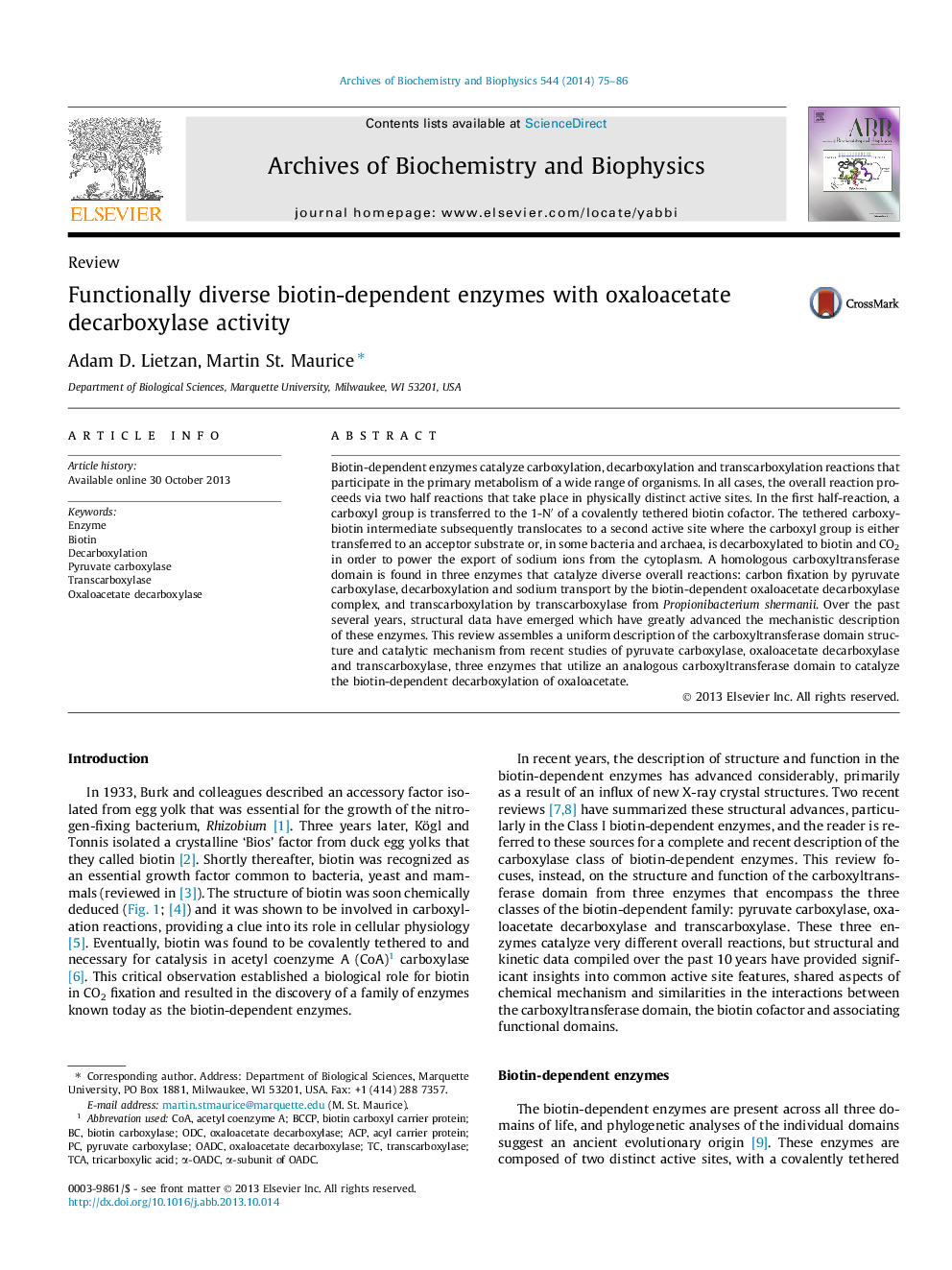| Article ID | Journal | Published Year | Pages | File Type |
|---|---|---|---|---|
| 1925234 | Archives of Biochemistry and Biophysics | 2014 | 12 Pages |
•Biotin-dependent enzymes catalyze various carboxyl transfer reactions.•Three functionally diverse members share a homologous carboxyltransferase domain.•Pyruvate carboxylase, oxaloacetate decarboxylase and transcarboxylase.•Common structural and mechanistic features are described.
Biotin-dependent enzymes catalyze carboxylation, decarboxylation and transcarboxylation reactions that participate in the primary metabolism of a wide range of organisms. In all cases, the overall reaction proceeds via two half reactions that take place in physically distinct active sites. In the first half-reaction, a carboxyl group is transferred to the 1-N′ of a covalently tethered biotin cofactor. The tethered carboxybiotin intermediate subsequently translocates to a second active site where the carboxyl group is either transferred to an acceptor substrate or, in some bacteria and archaea, is decarboxylated to biotin and CO2 in order to power the export of sodium ions from the cytoplasm. A homologous carboxyltransferase domain is found in three enzymes that catalyze diverse overall reactions: carbon fixation by pyruvate carboxylase, decarboxylation and sodium transport by the biotin-dependent oxaloacetate decarboxylase complex, and transcarboxylation by transcarboxylase from Propionibacterium shermanii. Over the past several years, structural data have emerged which have greatly advanced the mechanistic description of these enzymes. This review assembles a uniform description of the carboxyltransferase domain structure and catalytic mechanism from recent studies of pyruvate carboxylase, oxaloacetate decarboxylase and transcarboxylase, three enzymes that utilize an analogous carboxyltransferase domain to catalyze the biotin-dependent decarboxylation of oxaloacetate.
